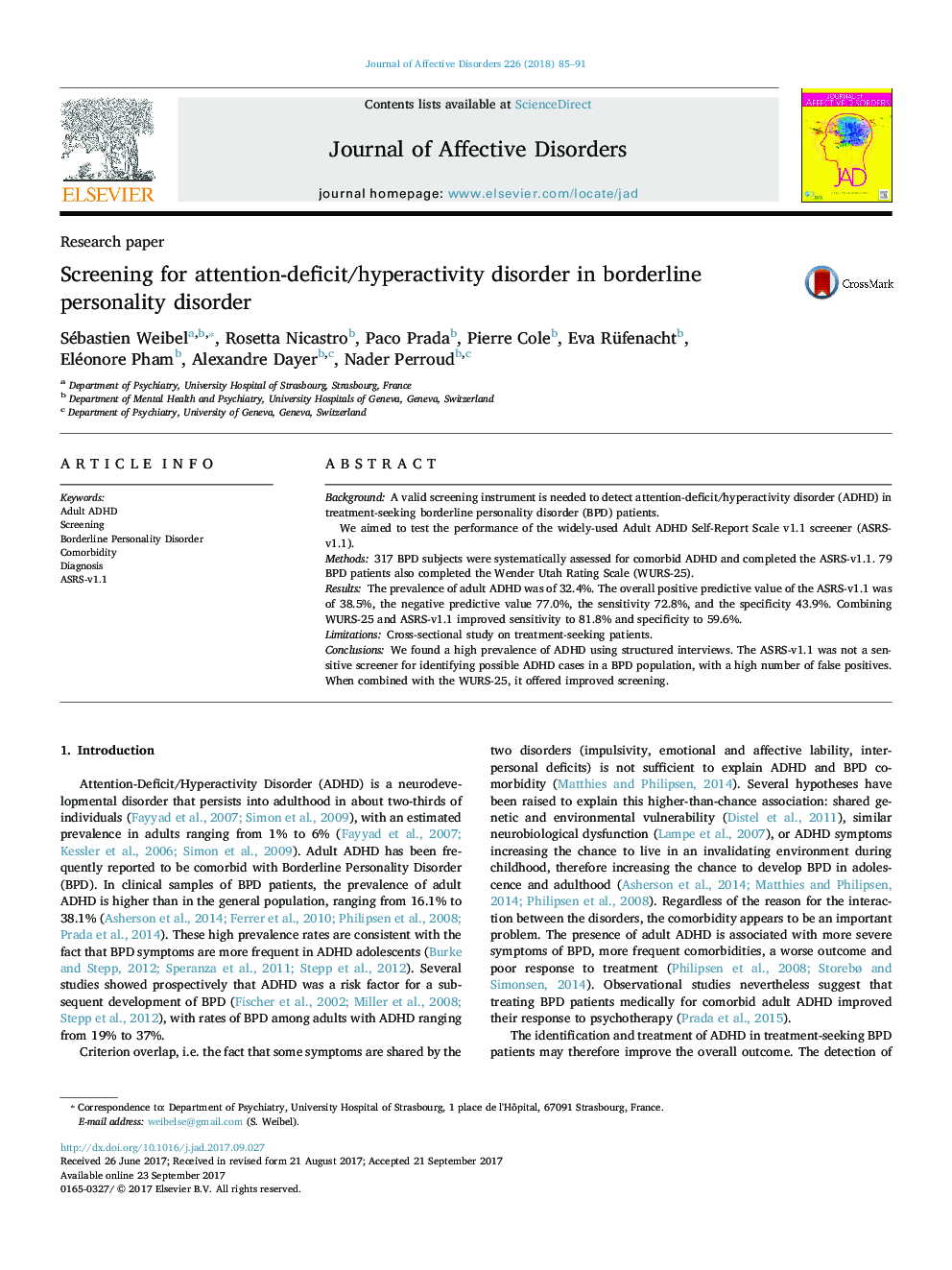| Article ID | Journal | Published Year | Pages | File Type |
|---|---|---|---|---|
| 5721640 | Journal of Affective Disorders | 2018 | 7 Pages |
â¢We studied a large sample of patients with borderline personality disorder.â¢Using structured interviews, we found a prevalence of adult ADHD of 32.4%.â¢The most largely used questionnaire for ADHD screening, the ASRS showed low positive and negative predictive values.â¢ASRS should be used with caution in this population, or possibly associated with the WURS scale.
BackgroundA valid screening instrument is needed to detect attention-deficit/hyperactivity disorder (ADHD) in treatment-seeking borderline personality disorder (BPD) patients.We aimed to test the performance of the widely-used Adult ADHD Self-Report Scale v1.1 screener (ASRS-v1.1).Methods317 BPD subjects were systematically assessed for comorbid ADHD and completed the ASRS-v1.1. 79 BPD patients also completed the Wender Utah Rating Scale (WURS-25).ResultsThe prevalence of adult ADHD was of 32.4%. The overall positive predictive value of the ASRS-v1.1 was of 38.5%, the negative predictive value 77.0%, the sensitivity 72.8%, and the specificity 43.9%. Combining WURS-25 and ASRS-v1.1 improved sensitivity to 81.8% and specificity to 59.6%.LimitationsCross-sectional study on treatment-seeking patients.ConclusionsWe found a high prevalence of ADHD using structured interviews. The ASRS-v1.1 was not a sensitive screener for identifying possible ADHD cases in a BPD population, with a high number of false positives. When combined with the WURS-25, it offered improved screening.
